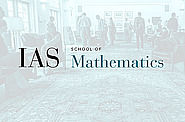2012-2013 Seminars
Nov
05
2012
Computer Science/Discrete Mathematics Seminar I
Query Complexity of Black-Box Search
Ben Rossman
11:15am|S-101
Oct
29
2012
Computer Science/Discrete Mathematics Seminar I
Combinatorial Walrasian Equilibrium
Michal Feldman
11:15am|S-101
Oct
23
2012
Oct
16
2012
Computer Science/Discrete Mathematics Seminar II
On the AND- and OR-Conjectures: Limits to Efficient Preprocessing
10:30am|S-101
Oct
15
2012
Computer Science/Discrete Mathematics Seminar I
A Multi-Prover Interactive proof for NEXP Sound Against Entangled Provers
Tsuyoshi Ito
11:15am|S-101
Oct
09
2012
Computer Science/Discrete Mathematics Seminar II
On the Conjectures of Nonnegative $k$-Sum and Hypergraph Matching
10:30am|S-101
Oct
08
2012
Computer Science/Discrete Mathematics Seminar I
Identity Testing of Tensors, Low Rank Recovery and Compressed Sensing
Amir Shpilka
11:15am|S-101
Oct
02
2012
Computer Science/Discrete Mathematics Seminar II
Plug your ears! Graph isomorphism, siren of the algebraic seas, calls to your quantum helmsman.
Alex Russell
10:30am|S-101
Oct
01
2012
Computer Science/Discrete Mathematics Seminar I
Random Vectors, Random Matrices, Permuted Products, Permanents, and Diagrammatic Fun
Cris Moore
11:15am|S-101
